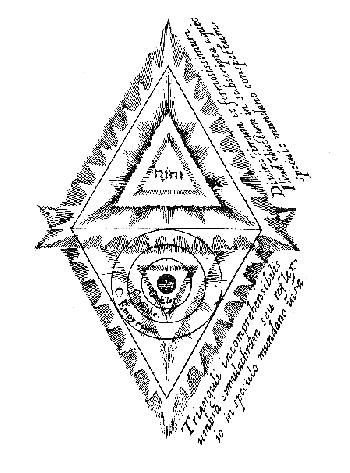April 23, 2008
-
For Shakespeare's Birthday:
Upscale Realismor, "Have some more
wine and cheese, Barack."
Allyn Jackson on Rebecca Goldstein
in the April 2006 AMS Notices
(pdf)"Rebecca Goldstein’s 1983 novel The
Mind-Body Problem has been
widely admired among mathematicians for its authentic depiction of
academic life, as well as for its exploration of how philosophical
issues impinge on everyday life. Her new book, Incompleteness: The
Proof and Paradox of Kurt Gödel, is a volume in the 'Great
Discoveries' series published by W. W. Norton....In March 2005 the Mathematical Sciences Research Institute (MSRI) in
Berkeley held a public event in which
its special projects director, Robert Osserman, talked with Goldstein
about her work. The conversation, which
took place before an audience of about fifty people at the Commonwealth
Club in San Francisco, was taped....A member of the audience posed a question that has been on the minds of
many of Goldstein’s readers: Is The Mind-Body Problem based on
her own life? She did indeed study philosophy at Princeton, finishing
her Ph.D. in 1976 with a thesis titled 'Reduction, Realism, and the
Mind.' She said that while there are correlations between her life and
the novel, the book is not autobiographical....She... talked about the relationship between Gödel and his
colleague at the Institute for Advanced Study,
Albert Einstein. The two were very different: As Goldstein put it,
'Einstein was a real mensch, and Gödel was very
neurotic.' Nevertheless, a friendship sprang up between the two. It was
based in part, Goldstein speculated, on
their both being exiles-- exiles from Europe and intellectual exiles.
Gödel's work was sometimes taken to mean
that even mathematical truth is uncertain, she noted, while Einstein's
theories of relativity were seen as implying
the sweeping view that 'everything is relative.' These
misinterpretations irked both men, said Goldstein. 'Einstein
and Gödel were realists and did not like it when their work was
put to the opposite purpose.'"Related material:
From Log24 on
March
22 (Tuesday of
Passion Week), 2005:"'What is this Stone?' Chloe asked.... 'It is told that, when the Merciful One made the worlds, first of all He created that Stone and gave it to the Divine One whom the Jews call Shekinah, and as she gazed upon it the universes arose and had being.'"-- Many Dimensions,
by Charles Williams, 1931For more on this theme
appropriate to Passion Week --
Jews playing God -- see
Rebecca Goldstein
in conversation with
Bob Osserman
of the
Mathematical Sciences
Research Institute
at the
Commonwealth Club,
San Francisco,
Tuesday, March 22.Wine and cheese
reception at 5:15 PM
(San Francisco time).From
UPSCALE,
a website of the
physics department at
the University of Toronto:Mirror Symmetry
"The image [above]
is a depiction of
the universe as a
mirror image
of God,
drawn by Robert Fludd
in the early 17th century.The caption of the
upper triangle reads:'That most divine and beautiful
counterpart
visible below in the
flowing image of the universe.'The caption of the
lower triangle is:'A
shadow, likeness, or
reflection of the insubstantial*
triangle visible
in the image
of the universe.'"* Sic. The original is incomprehensibilis, a technical theological term. See Dorothy Sayers on the Athanasian Creed and John 1:5.
For further iconology of the
above equilateral triangles,
see Star Wars (May 25, 2003),
Mani Padme (March 10, 2008),
Rite of Sping (March 14, 2008),
and
Art History: The Pope of Hope
(In honor of John Paul II
three days after his death
in April 2005).Happy Shakespeare's Birthday.